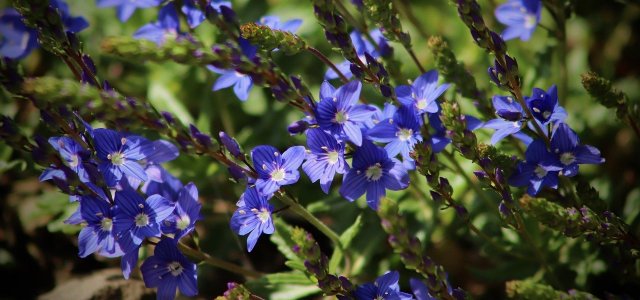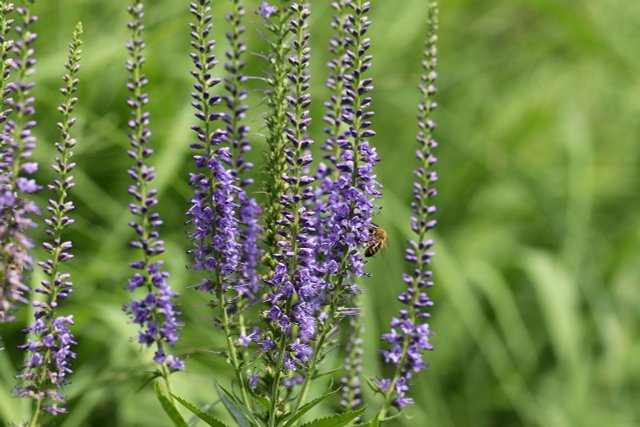
Speedwell comes in a variety of sizes and colors. The plant is very valuable both for bees and other insects, and for us humans as a medicinal plant. Read here how to plant speedwell in your garden.
Speedwell refers to a genus of plants that includes about 450 different species. Because of their botanical name (Veronica), the plants are also often called veronica.
The genus belongs to the plantain family and is widespread in many parts of Europe. Preferably, veronica grows on poor soil such as stony hills, but you can also discover the plant wild in swamps and wet meadows.
The perennials bloom from spring through fall in a wide variety of colors and are well suited for a bee-friendly garden.
Speedwell in your garden

Depending on the variety, speedwell differs greatly. Already the size varies from 20 to 200 centimeters. The shape of the leaves and the color of the flowers is also very different. Therefore, you should think carefully beforehand, which variety is suitable for your garden.
Varieties:
Tall varieties usually have a longer blooming period, while the lower varieties usually bloom earlier but for a shorter time.
Long-leaved speedwell (Veronica longifolium) is particularly popular. It reaches a height of between 60 and 120 centimeters and blooms in July and August in white or bright blue.
Those who like more variety in color opt for the spiked speedwell (Veronica spicata). in addition to white and blue, the variety is also available in purple, pink or red.
Greater speedwell (Veronica teucrium) makes an excellent wild perennial.
Habitat: Speedwell thrives especially well in sunny spots.
Soil:
Depending on the variety, the plant’s soil requirements vary.
While some varieties do well in poor, dry, well-drained soil, other varieties require moist soil as they are native to marshy areas.
Silverleaf speedwell requires dry, rather nutrient-poor soil. Common speedwell does best with waterlogging and is well suited for garden ponds.
Planting and caring for speedwell

To plant speedwell, it’s best to buy young plants from a garden supply store. This is how you proceed:
- The best time to plant the perennial is in May.
- For varieties that require a lot of nutrients, first enrich the soil with some mature compost or organic fertilizer, such as horn shavings.
- Dig a hole about one and a half times the size of the root ball for each plant.
- For varieties that do better with dry and well-drained soil, you should first loosen the soil with some sand and possibly create a drainage of gravel.
The spacing between varieties varies. You can get more information about your variety at the garden center.
How to care for speedwell:
- If you have chosen the right location for your speedwell, the perennial is usually very easy to care for.
- Large varieties may need a support to keep from bending.
- In the fall, feed the perennial with organic fertilizer or re-fertilize the soil with compost.
- Cut off the withered parts regularly. If you prune the plant by about a third in summer, you will stimulate further flowering.
How to use speedwell

Speedwell is particularly popular not only among bees and insects. The medicinal plant is also highly valued in folk medicine. It is mainly the speedwell (Veronica officinalis) that is used. Traditionally, the plant is used mainly for respiratory diseases or skin problems. A tea is usually prepared from the dried flowers and leaves.
In 2015, scientists* conducted a study on the ingredients and effects of various types of speedwell. The medicinal plant contains essential oils and valuable flavonoids. In addition, the plant has antimicrobial and antioxidant effects. Thus, the plant ingredients support your body in cell renewal, fight free radicals and keep it healthy.
You can use the young leaves of the perennials similar to watercress. You can add them to your salad, add them to green smoothies or season dishes with them. The older the leaves are, the more bitter they taste. These bitters don’t taste good to everyone, however they are healthy. The edible flowers add a colorful accent to your dishes.

